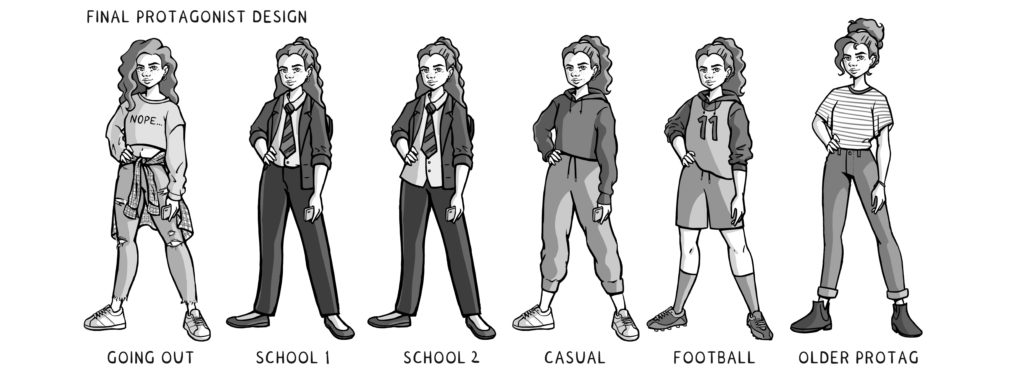
Campaign Development
Having identified the subject of our campaign (peer-on-peer abuse) and its intended outcome (to make information on the subject available to young girls, where previously none was available), we needed a plan of action.
Choosing the form of the campaign
For the information to resonate with the intended audience, it needed to be presented in a way that was attention-grabbing, used popular media and spoke in an authentic voice. For us, this meant a graphic novel with a teenage protagonist. This would give the audience a character to empathise with, and allow those designing the story to convey the lived experience of peer-on-peer abuse.
The idea was that the story would be episodic, allowing us to also build a social media campaign alongside it, with anticipation building for each new instalment and calls-to-action linked to the issues explored at each point in the story. The social media campaign would not only build engagement - by meeting the girls where they were at - but would explicitly tie the human story to key facts about abuse, and signpost organisations they could turn to for help.
How to apply
- Research different creative media, and which are popular amongst the group you wish to communicate with e.g. short video clips or musical performances.
- Be realistic in your aims, and plan a project best suited to the skills in your team and the funding you have available. Some media are better suited for low budget projects e.g. photos and simple videos filmed on smartphones can still look good with a quality camera, but without recording equipment recording dramatic performances or music might sound too basic.
- Choose something which can build and develop – a story that unfolds, or smaller pieces that contribute to a final collaboration. Think about how each of these pieces fits into the whole e.g. if you have short interviews with people affected by the topic, how can they be arranged so they complement each other and add to overall understanding?
- Design a social media campaign to fit alongside the creative output. This should make explicit the aims of the campaign. For us, we wanted young women to recognise peer-on-peer abuse; our social media posts and graphics gave statistics that reinforced the message of the episodes. Signposting local and national avenues for support was also essential, to help address any issues which were raised. For you, the campaign aims might be different, but the social media posts should form a clear link between the creative campaign and your aims.
Engaging Professionals
Once VIBE participants had identified the subject of the campaign and the form they wanted it to take, we approached media professionals to create a project brief. It was important that the young women themselves drove the narrative, so storyline ideas from the Design Team were fed to the media team by a VIBE worker, and an initial storyboard was produced.
Further Consultation
The media company also designed prototype characters, which we were then able to consult on more widely.

We did this by going into schools and colleges, and asking girls to state preferences, but also to think imaginatively about other character details and potential backstories. Some responses are collated in this document.
How to apply
- Check in regularly with the people you want to engage with your campaign. When asking for opinions on first attempts or elements of the creative project, don’t just ask closed questions, or to choose a or b. Try to gauge reaction and prompt other thinking – this may end up producing new ideas that add depth to the original.

